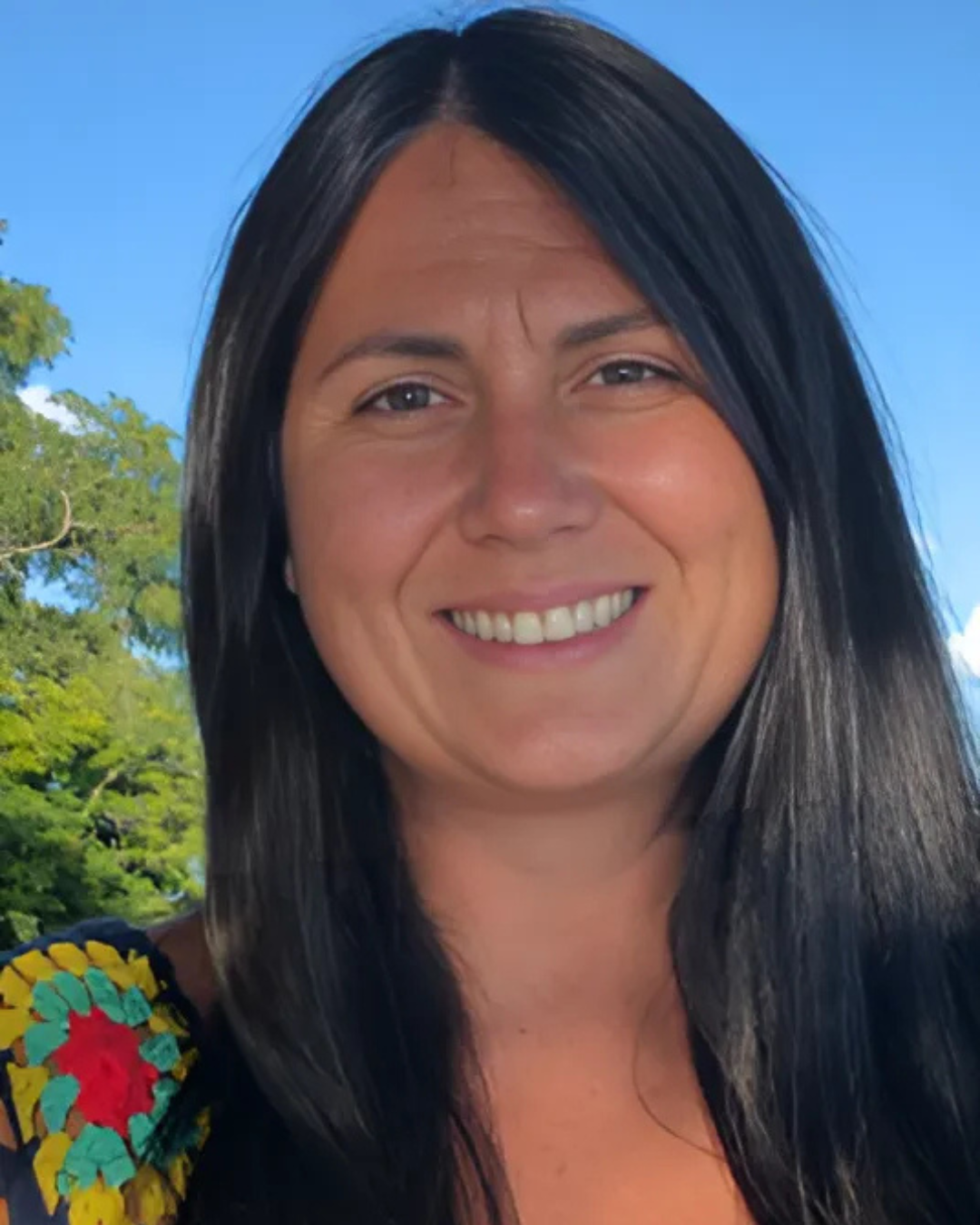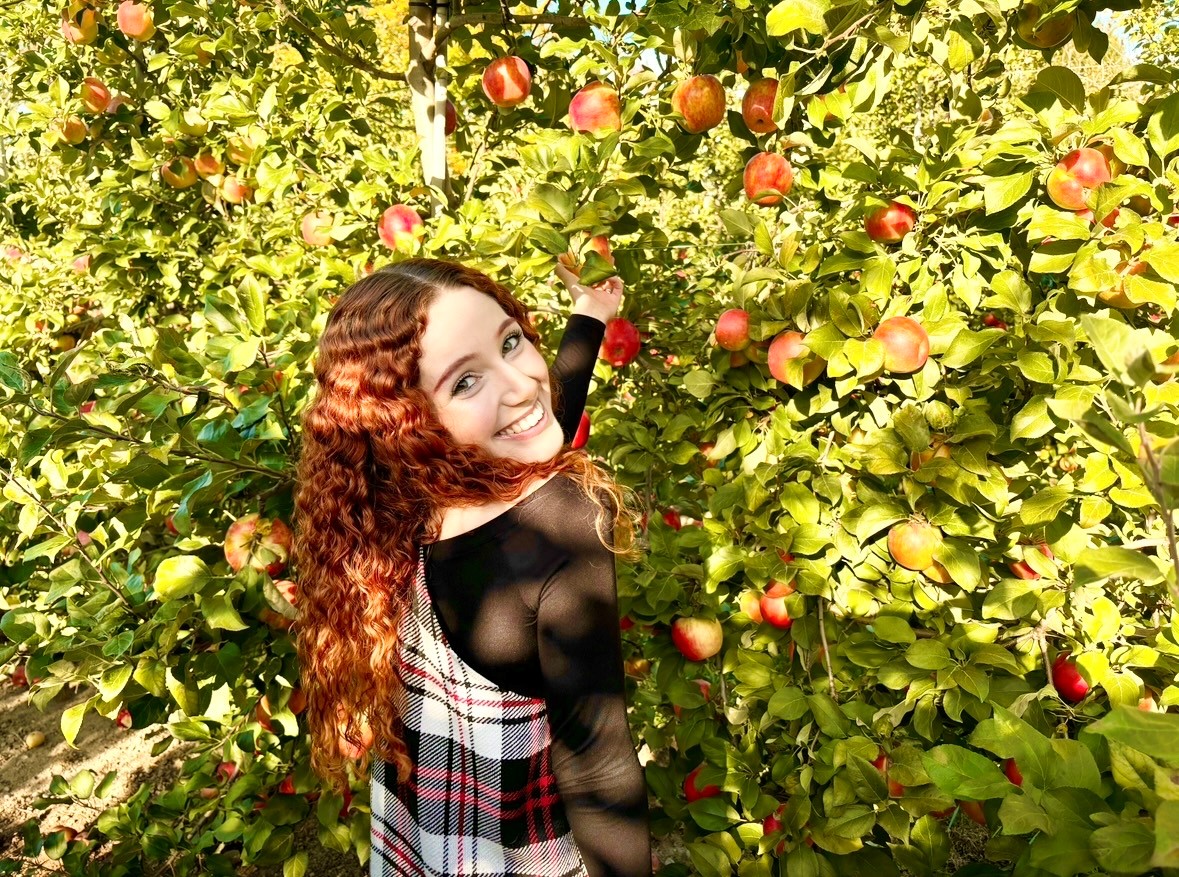For Jennifer Fraser, a final year Education student and member of the Indigenous Teacher Education Program (ITEP) at Queen’s University, the natural world has always been a magical place. One scene Jennifer has always found particularly enchanting lies within Prince Edward County, Ontario: an outdoor learning centre called That Blue Barn. Inspired by the environmental, play-based programming, Jennifer chose to sign her daughter up for camp. When the opportunity arose to teach at the farm for her alternative practicum placement this spring, Jennifer was thrilled.
 “My daughter attended That Blue Barn for the after-school program, and the set-up was absolutely idyllic,” Jennifer shares. “The space is filled to the brim with books and arts and craft supplies. The program curator, Melanie Taylor, is also an accomplished artist; her programming is saturated with an appreciation for beauty in the natural world and the hand-made items displayed around us. It was really a lovely opportunity for me to see how one educator is teaching differently, in entirely her own unique and creative way.”
“My daughter attended That Blue Barn for the after-school program, and the set-up was absolutely idyllic,” Jennifer shares. “The space is filled to the brim with books and arts and craft supplies. The program curator, Melanie Taylor, is also an accomplished artist; her programming is saturated with an appreciation for beauty in the natural world and the hand-made items displayed around us. It was really a lovely opportunity for me to see how one educator is teaching differently, in entirely her own unique and creative way.”
In Jennifer’s time at the farm, she had the joy of planning and leading programming for both the day school and March break camp. She describes daily life at That Blue Barn, illustrating the farm’s value of outdoor play, song, visual arts, and natural discovery. “Kids would arrive and we would spend time outside in the play area, which had a campfire and lots of tools for discovery,” Jennifer begins. “After this, we would sing a welcome song and introduce the day’s theme.” The camp explored a variety of nature themes throughout the month, unravelling knowledge about baby animals, seeds and life cycles, maple syrup, and more. After exploring their learning through dialogue and creative arts, the children set out for adventure on the land.
“We would embark on a discovery walk with the dogs through the property,” Jennifer describes, “passing by the cows’ pasture, then going through the woods and swamp to visit trees named in honour of past kids who had attended the program.” Jennifer sets the scene of the campers leading themselves through the trails, exploring clues of creatures gone by that captured their attention – many of which led to interesting discoveries and hypotheses: “They would ask questions like, ‘Why is the ice all melted around the base of the trees?’ or declare ‘The trees have their own swimming pools!’”
Before the day was out, the campers would return to the barn, excited to visit the animals and make creations in the hayloft. “We would take the kids to the barn to collect the day’s eggs from the chickens and ducks, to hold baby chicks, to commune with the cows and pigs, and to search for the elusive barn kitties,” Jennifer shares. “Upstairs in the hayloft, the kids built obstacle courses out of hay bales, scrap wood, and other found materials. They constructed elaborate machines and creations out of cardboard, decorating them with paint sticks and chalk.”
Jennifer’s experience with That Blue Barn was heartwarming for her as a person with so much love for children and nature. Spending the majority of the day outside with the campers was a beautiful opportunity to see how children’s imaginations run wild, and to see how long children can entertain themselves when they are left to explore natural spaces with their own agendas. “There were witches’ houses in the woods, and many potions brewed over the campfire, and collections of sticks and dried flowers and bark,” Jennifer shares warmly. “One particularly rainy afternoon, I had the pleasure of witnessing a group of pre-teen girls playing barefoot in the mud with reckless abandon; their lack of inhibition and pure joy in squishing mud between their fingers and toes was a beautiful illustration of the innocence of childhood.”
In Jennifer’s future, she plans to bring land-based learning to her students in as many ways as she can. “How can we spend more time outside with our students, allowing them to explore the natural world around them and make sense of it in ways that are meaningful to them?” Jennifer urges. “How can we make our classrooms feel more like families, where everyone is valued for their contributions and we all see the value in our interconnectedness?”
For teacher candidates who have yet to select their alternative practicum placements, Jennifer promotes travelling as much as possible and learning from educators with shared core values. “Take advantage of the alternative practicum opportunity and apply for available funding,” she encourages. “Pick something that is personally meaningful to you. As a student in the Indigenous Teacher Education Program, I wanted my experience to be rooted in land-based learning. So, even though That Blue Barn is not an Indigenous centre, its values align with Indigenous values: learning from the land, seeing the plants and animals as our teachers, and living in reciprocity with the natural world and its cycles.” As Jennifer sets out into the world as a teacher, she will continue to transform her students through adventure, imagination, and love for Mother Earth.
About the Author
 Juliette Silveira is a final year Education student at Queen’s University. In 2024, she completed her Bachelor of Arts (Honours) Degree at Queen’s University with a Minor in Dramatic Arts and a Major in English Language & Literature. In July 2025, she will complete her Bachelor of Education degree through the Concurrent Education program. Juliette has spent her time at Queen’s learning to become an Intermediate/Senior Drama and English teacher, and she has focused on Indigenous teacher education through the ITEP program. Passionate about cultivating students’ creativity and critical thinking, Juliette is eager to bring her experience as an actress, musical theatre teacher, creative writer, and literary analyst into her classroom.
Juliette Silveira is a final year Education student at Queen’s University. In 2024, she completed her Bachelor of Arts (Honours) Degree at Queen’s University with a Minor in Dramatic Arts and a Major in English Language & Literature. In July 2025, she will complete her Bachelor of Education degree through the Concurrent Education program. Juliette has spent her time at Queen’s learning to become an Intermediate/Senior Drama and English teacher, and she has focused on Indigenous teacher education through the ITEP program. Passionate about cultivating students’ creativity and critical thinking, Juliette is eager to bring her experience as an actress, musical theatre teacher, creative writer, and literary analyst into her classroom.